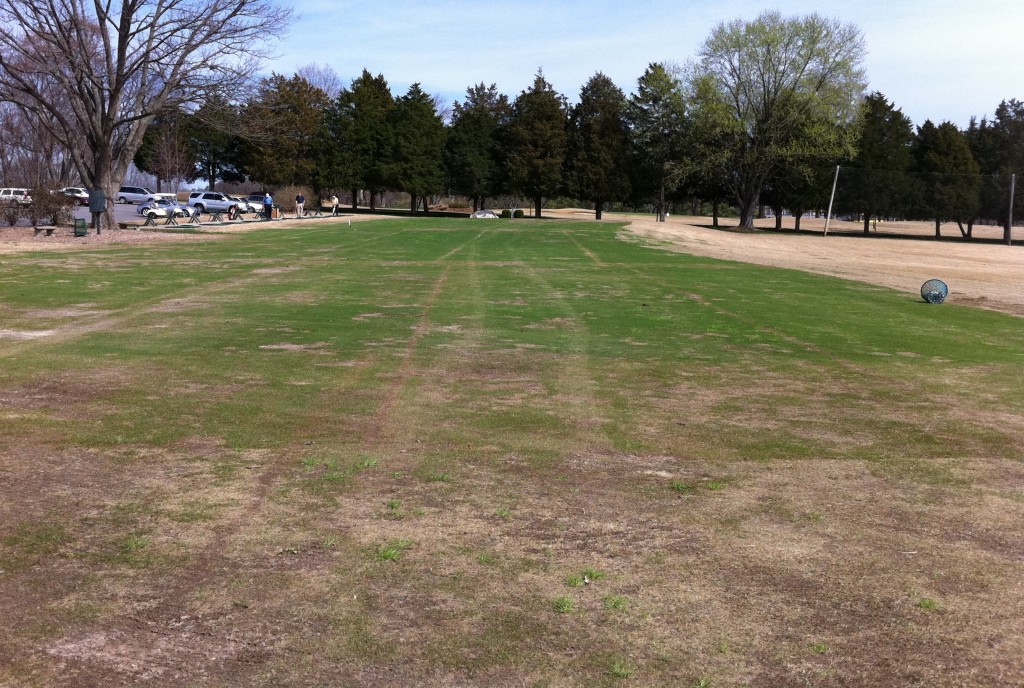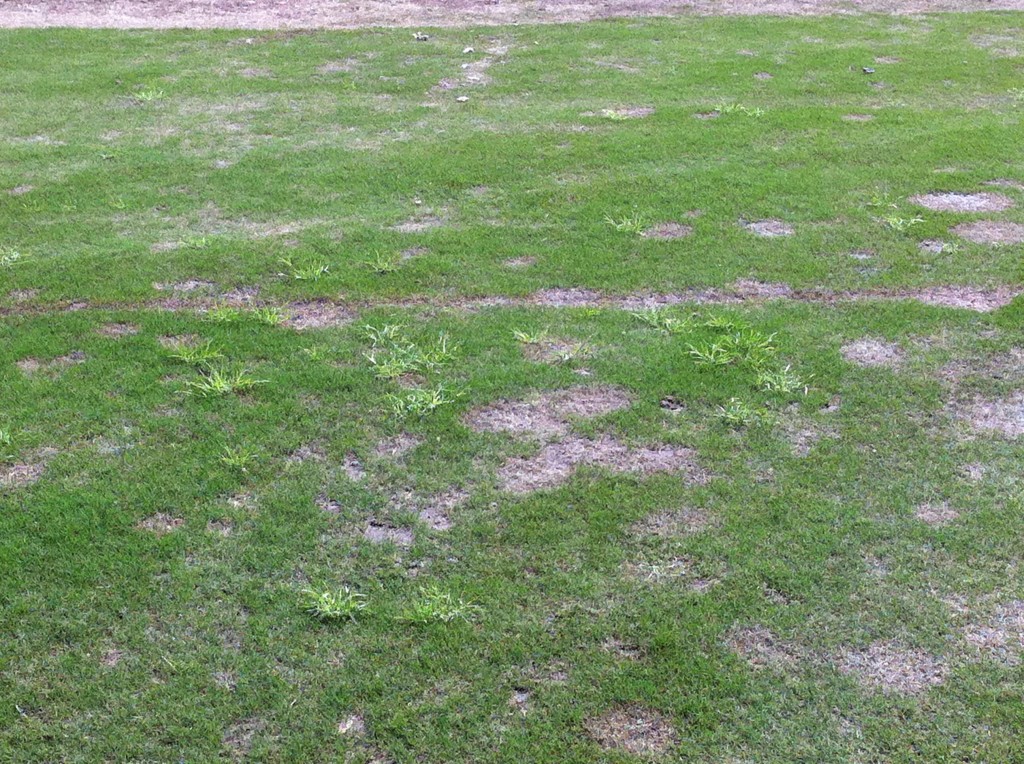The driving range tee covers were pulled back late last week and to our surprise, its alive. Majority of the tee has already broken dormancy and pushing new leaf blades to begin making food through photosynthesis. Even though the tee is uncovered and green, there is still allot of work to be done to make the tee playable and ready for everyday use. During the transition period please refrain from hitting golf balls off the grass driving range tee. Please continue to use the mattes. Allowing the tee to transition smoothly will provide a better playing surface early than destroying the young tender new growth. With some continued good growing conditions and fertilizer the driving range tee could be operational before we know it.
Some interesting points we can learn from uncovering the tarps. Obviously temperatures were warmer under the tarp absorbing heat from the sun, but also the heat and moisture trapped under the tarp has caused disease and weeds. Immediately we noticed moss growing on the tee, poa annua, and white clover weeds thriving in these conditions. More importantly we noticed SDS or Spring Dead Spot Disease. SDS is a soil borne disease that is inoculated in the fall on the turf plant and prevents the plant from breaking dormancy in the spring resulting in numerous large and small patches of bare turf. Often these patches are in circular form and can take months for surrounding bermuda grass to heal over the dead SDS plant tissue. In any case, we will monitor this situation and perform cultural practices to stimulate new growth and a speedy transition.
In the above picture, you can see the numerous Spring Dead Spot Disease patches and some poa annua.


